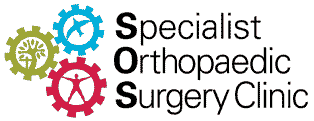Understanding shoulder separation and how it’s treated
What Is an AC Joint Dislocation?
The acromioclavicular (AC) joint is where the collarbone (clavicle) meets the shoulder blade (scapula) at the top of your shoulder. A dislocation of this joint, also called a shoulder separation, happens when the ligaments that hold the bones together are stretched or torn.
What Causes AC Joint Dislocation?
AC joint dislocation is usually caused by a direct blow or fall onto the shoulder. It’s common in contact sports and accidents. The injury can range from a mild sprain to a complete separation of the joint.
Common Causes Include:
- Falling directly on the shoulder
- Motorbike or bicycle accidents
- Collisions in sports like rugby, football, or hockey
- Heavy lifting accidents
Symptoms of AC Joint Dislocation
- Sudden pain at the top of the shoulder
- Swelling or bruising around the joint
- A visible bump where the collarbone sticks up
- Difficulty lifting the arm
- A feeling of instability in the shoulder
How Is It Diagnosed?
A physical exam and X-ray are usually enough to confirm the diagnosis. Your doctor will check for tenderness and movement, and the X-ray can show how far the bones have moved out of place.
Imaging Tests:
- X-Ray: Confirms dislocation and shows severity
- MRI: Used if soft tissue injuries (like ligament tears) are suspected
Types of AC Joint Dislocation
Doctors classify AC joint injuries from Type I to Type VI based on how much damage there is:
- Type I: Minor sprain, no dislocation
- Type II: Partial dislocation, some ligament damage
- Type III: Complete dislocation, collarbone raised
- Types IV–VI: Rare and more severe dislocations needing surgery
Treatment Options
Non-Surgical Treatment
Most Type I and II injuries are treated without surgery.
- Rest and a sling for support
- Ice to reduce swelling
- Pain relief medications
- Physiotherapy to regain strength and motion
Surgical Treatment
Surgery may be needed for more severe dislocations (Types III–VI), especially in active individuals or athletes. The procedure may involve reconstructing the damaged ligaments and stabilizing the joint with a plate or suture loop.
Recovery and Rehabilitation
Recovery time depends on the type of injury and treatment:
- Non-surgical recovery: 4–6 weeks for most daily activities
- Post-surgery recovery: 3–6 months with physiotherapy
Physiotherapy is important to restore movement, reduce stiffness, and rebuild shoulder strength.
When to See a Doctor
See your doctor if you:
- Feel a sudden pain in the top of your shoulder
- Notice a bump or unusual shape in your shoulder
- Have difficulty moving your arm or lifting objects
Can AC Joint Dislocation Be Prevented?
- Use proper techniques in sports
- Wear protective gear in contact sports
- Strengthen your shoulder muscles
- Be careful on uneven surfaces to avoid falls
Helpful Resources
